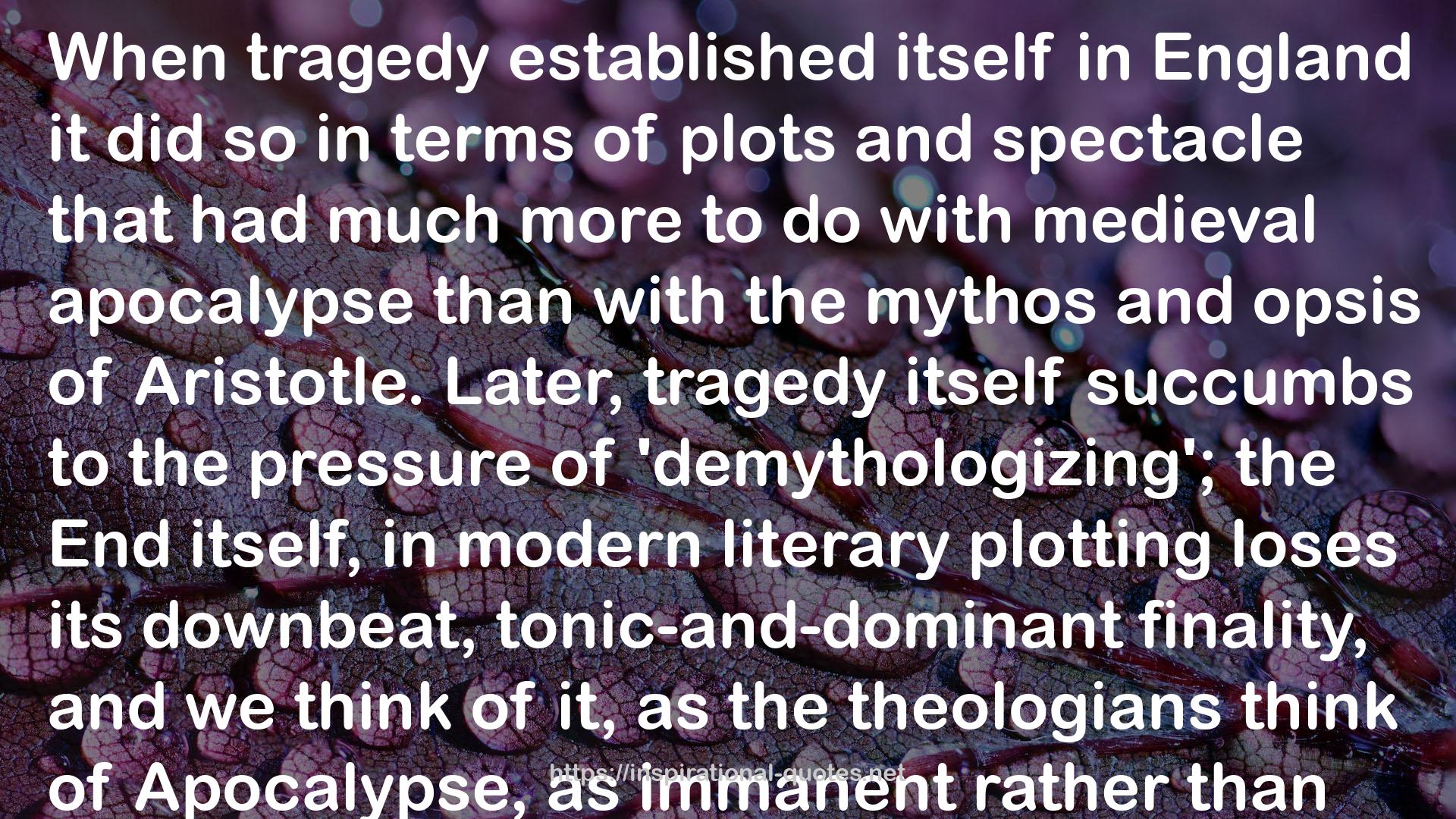" When tragedy established itself in England it did so in terms of plots and spectacle that had much more to do with medieval apocalypse than with the mythos and opsis of Aristotle. Later, tragedy itself succumbs to the pressure of 'demythologizing'; the End itself, in modern literary plotting loses its downbeat, tonic-and-dominant finality, and we think of it, as the theologians think of Apocalypse, as immanent rather than imminent. Thus, as we shall see, we think in terms of crisis rather than temporal ends; and make much of subtle disconfirmation and elaborate peripeteia. And we concern ourselves with the conflict between the deterministic pattern any plot suggests, and the freedom of persons within that plot to choose and so to alter the structure, the relation of beginning, middle, and end.
Naïvely predictive apocalypses implied a strict concordance between beginning, middle, and end. Thus the opening of the seals had to correspond to recorded historical events. Such a concordance remains a deeply desired object, but it is hard to achieve when the beginning is lost in the dark backward and abysm of time, and the end is known to be unpredictable. This changes our views of the patterns of time, and in so far as our plots honour the increased complexity of these ways of making sense, it complicates them also. If we ask for comfort from our plots it will be a more difficult comfort than that which the archangel offered Adam:
How soon hath thy prediction, Seer blest, Measur'd this transient World, the race of Time, Till time stands fix'd.
But it will be a related comfort. In our world the material for an eschatology is more elusive, harder to handle. It may not be true, as the modern poet argues, that we must build it out of 'our loneliness and regret'; the past has left us stronger materials than these for our artifice of eternity. But the artifice of eternity exists only for the dying generations; and since they choose, alter the shape of time, and die, the eternal artifice must change. The golden bird will not always sing the same song, though a primeval pattern underlies its notes.
In my next talk I shall be trying to explain some of the ways in which that song changes, and talking about the relationship between apocalypse and the changing fictions of men born and dead in the middest. It is a large subject, because the instrument of change is the human imagination. It changes not only the consoling plot, but the structure of time and the world. One of the most striking things about it was said by Stevens in one of his adages; and it is with this suggestive saying that I shall mark the transition from the first to the second part of my own pattern. 'The imagination,' said this student of changing fictions, 'the imagination is always at the end of an era.' Next time we shall try to see what this means in relation to our problem of making sense of the ways we make sense of the world. "
― Frank Kermode , The Sense of an Ending: Studies in the Theory of Fiction
